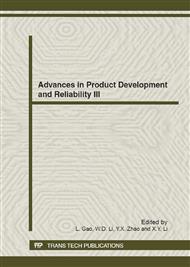p.38
p.44
p.49
p.55
p.61
p.67
p.72
p.77
p.82
Research on Two Ends Energy-Absorbing Structure of High-Speed Railway Passenger Car Body
Abstract:
Based on characteristics of high-speed trains, a special passive protective structure was designed and simulated by the non-linear FEA code LS-DYNA. The two-step energy-absorbing structure fixed on the cab side and the similar function structure on the other end were studied. It was proved that the two-step structure deformed orderly and had an energy absorbing capacity of 3.4MJ which could protect the cab effectively and that the rear end low stiffness zone had an energy absorbing capacity of 6.5MJ which also could protect the integrity of the passenger areas. Three typical train-to-train collision scenarios were studied by full-scale FEA method.
Info:
Periodical:
Pages:
61-66
Citation:
Online since:
June 2012
Authors:
Keywords:
Price:
Сopyright:
© 2012 Trans Tech Publications Ltd. All Rights Reserved
Share:
Citation:


